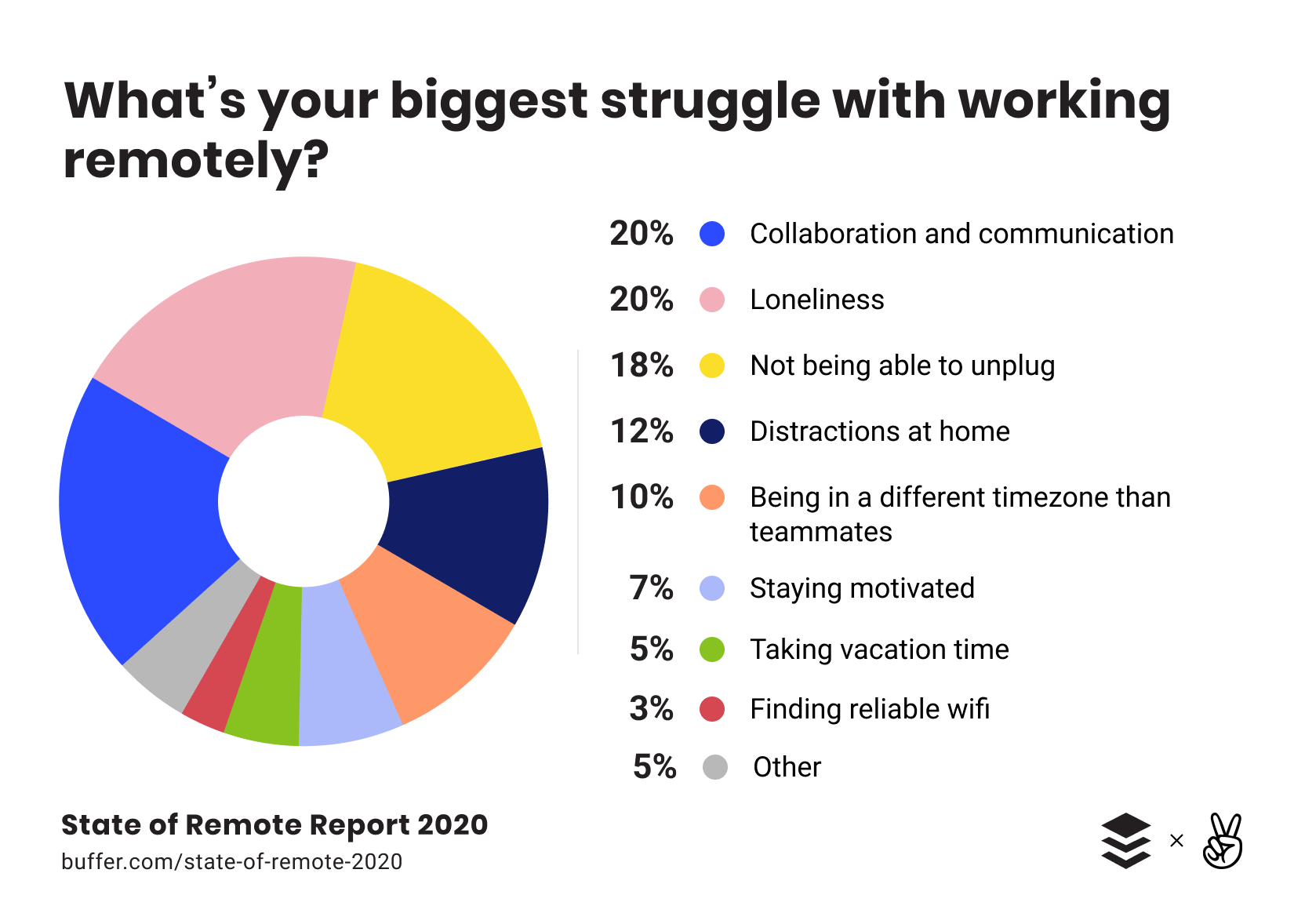Working from home was already rising in popularity before the coronavirus pandemic hit, but a combination of lockdown orders and fears of infection accelerated the trend dramatically. Based on the conversations I’ve had during coaching sessions with my wellness clients in recent weeks, it seems like few American professionals who have been forced to work remotely have any plans to get back to their offices any time soon.
In fact, most of the people in my network are delighted to finally have the opportunity to work from home, although it’s far from that simple for them – people have a lot of mixed feelings about it. You might have been pushing to be allowed to work from home for years, but now that it’s here, you’re finding that it’s not as easy as you once thought.
If that sounds familiar, I can tell you that you’re not alone. A recent State of Remote Work report by Buffer found that although 97% of remote workers would recommend working from home to others, they still struggle with it, and that definitely matches what I’m hearing from clients. Having trouble with communication, loneliness and unplugging from work all seem like challenges built in to the transition.

There are good reasons for these difficulties. When you work from home, you erase the physical separation between your work life and your home life, and that can make it even harder to mentally separate between being “at work” and being “away from work.” To hit a good work-life balance, or at least something resembling it, you need to have times when you’re at work, gaining satisfaction from your job, and times when you’re living the rest of your life – spending time with friends and family, relaxing and de-stressing, enjoying leisure pursuits and hobbies.
If you found it difficult to maintain a harmonious work-life balance before the pandemic, working from home is likely to make it even more challenging. Still, there are definitely things you can do to separate between your work life and your home life, even if they both take place in the same location.
1. Get out of bed
One of the most popular ideas that entice people when it comes to working from home is that you can get all your work done without even getting out of bed. Working from your bed, the couch, or a hammock slung on your balcony can sound appealing, but for most of us, it’s not really such a good idea.

I’ve noticed that when I work from a place that I typically use to relax, it harms both my productivity at work and my ability to wind down after work. Working from home already blurs the boundaries between work and play; you don’t want to erase them altogether by bringing your work into your bedroom or your chill-out space.
Don’t get me wrong – I’ve had fun, lazy mornings with my laptop with me in bed, but the truth is that I focus much better when I work in my “office” space at the kitchen table. One friend of mine carved out private work space in a converted closet. As small as it is, she doesn’t feel cramped, and she says that it’s worth it to feel a sense of “arriving at work” and “leaving work” which helps users transition between activities and mindsets.
2. Keep track of time
When you’re working at home, relaxing at home, and socializing at home, it’s easy to let your work hours and your relaxation hours mix together. There’s a real risk that your work can end up spilling over into every hour of your day, including your evening bubble bath and late-night sitcom time, because there’s no clear end to your working day.
It’s important to keep to your regular working and break hours, so that work doesn’t take over your life. When I take a break, I make it clear that I’m walking away from the computer and putting all my work on hold. I’m a huge believer in getting outside.
In my opinion, there’s nothing better than fresh air! So if you can, head outside entirely during a break; take a walk to a nearby park, if you can, or just breathe deep and get your body moving. Scientific research has confirmed that nature helps reduce stress, and exercise clears your head as it re-energizes you for when you return to work.
3. Don’t be a stranger
Social isolation is one of the biggest trouble spots associated with working from home. It’s one of the two top issues that remote workers struggle with, according to the Buffer study, with 20% of people who work from home saying that loneliness and isolation are their biggest challenge.
I know that I start to go crazy if I haven’t had a decent chat in two days. Some days that means I end up spending a little too long talking to the Uber Eats guy, if I don’t catch myself.

When you’re working in an office, there’s plenty of informal conversation and banter to help you feel part of a team. When you work from home, especially if you live alone, there’s no such natural sense of connection. Without the proverbial water cooler, it’s up to you to create and maintain work friendships.
Do what you can to keep your social life going. Try scheduling a daily phone break with a colleague, or set up a weekly video-conferencing meeting with the whole office, just so that everyone can check in and stay in touch. These relationships also underpin your ability to collaborate smoothly with your colleagues.
4. Get dressed
Just about every WFH meme references the joy of being able to work in your pajamas, or to have Zoom calls without pants. It makes sense. Pajamas are fun and comfortable, and if you’ve spent years on end dressing up in a suit and tie every day, who can blame you for rejoicing in wearing clothes that are actually comfortable for a change?
Personally, I love my PJs, so I don’t want to knock them, but the old cliche about “dressing for success” didn’t come out of nowhere. When you work in your pajamas, you’re basically fading that line between work and home even more. Getting dressed in “real clothes,” even if we’re talking about changing from pajamas to a t-shirt and jeans, helps you to feel like you’re “going to work.”
One study even found that when you dress in business attire, it changes the way you think and relate to people, so putting on your work clothes can be a great way of getting yourself in the work mindset. For me, putting on shoes is how I signal to myself that I’m at work. Changing out of your work clothes can signify the end of your working day, so that you can truly relax without feeling like you still have half a foot in your “work” mentality.
On the other hand, if you find that you love your PJs and you have a better way to mark the transition between work and home, then go for it. Whatever works – you do you.
5. Don’t bring fun to work
Hopefully, you do enjoy your job and find plenty of fun and satisfaction in your work. What you want to avoid is connecting the things that you do to relax and chill out with your work time.
That means things like keeping your favorite sitcom on in the background while you’re working. It’s a bad idea; it’ll ruin your enjoyment of the program, and it’ll chip away at your productivity at work.
Save it as something to properly enjoy as a reward for putting in a full day of work.
A healthy balance is still possible
Working from home can be an awesome experience for everyone, as long as you keep your work life and your home life separate. You need satisfaction from both work and relaxation, so think carefully about the clothes you wear and the place and hours you choose for work, keep up with your work relationships, and save your favorite activities for after work instead of mixing them up.
Finding a happy work-life balance is within your reach.


